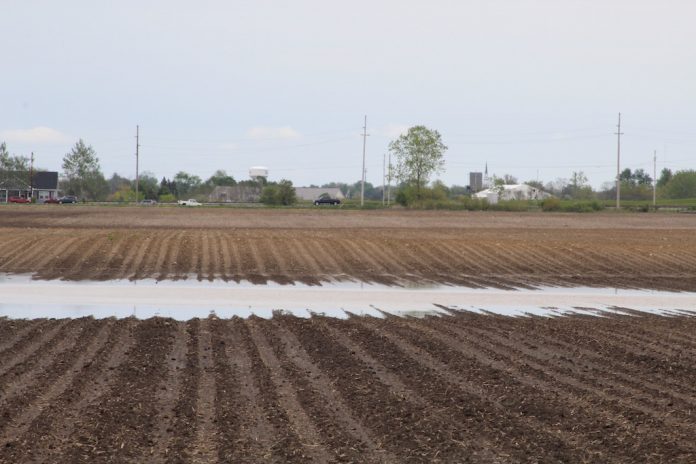(This information was provided by the Ohio Farm Bureau Federation.)
COLUMBUS — Adding to the complexities of farmers’ prevented planting decisions is a new round of Market Facilitation Program (MFP) payments recently announced by the Trump administration to offset losses being felt in farm country due to trade woes with China.
Under this trade aid, producers of alfalfa hay, barley, corn, oats, sorghum, soybeans, wheat and a long list of other commodities will receive a payment based on a single county rate multiplied by a farm’s total plantings to those crops in aggregate in 2019. Those per acre payments are not dependent on which of those crops are planted in 2019.
Farmers unable to plant facing tough decisions. Read more about prevented planting options.
The first payments are expected to be made to farmers in July or August. The second payment will be made around November and the third likely in early 2020, USDA officials said, unless a trade deal has been reached by then.
The amounts will be determined by how much each county has suffered from the retaliatory duties imposed by China, as well as previous tariffs put in place by the European Union and Turkey.
“While the administration was very sensitive about not impacting planting decisions between the commodities, they did create some more uncertainty because not we have producers that might have been considering Prevent Plant that are now saying that they need to plant a crop to get a payment,” said Ben Brown, manager of Ohio State’s Farm Management Program.
“It’s like that old saying ‘one in the hand, two in the bush’. The Prevent Plant is the one in the hand as producers know what the payment is going to be based on the coverage level and historical data but we are sitting here wondering what the trade aid payment is going to be.”
Trade aid or prevented planting payments?
Which option, Prevent Plant or MFP payments, would offer the most benefits to an individual farmer? There is no clear-cut answer, but, according to USDA, it does have to be one or the other.
So, how does a farmer know if planting corn late into June will be the right choice?
“There are some parcels of land in parts of the state that respond differently but agronomists will tell you that every day that passes take a yield hit from the full potential. We have a decent idea of how well corn can produce in a season but the unknown factor of weather adds to the challenges of a later planted corn crop,” Brown said.
“The other thing to take into consideration is that if we start to see large acres of corn come out of production due to Prevent Plant we are going to see some increases in corn price and that has already taken place.
“The reason I bring this up is that most producers in Ohio have a revenue crop insurance plan that takes into account the harvest price. So, if we come to October and we have high corn prices, that will increase the revenue guarantee for the crop insurance program. Yield is important but in a case like this year, price will be important as well.”
Farmers confused
Bringing the trade aid package into the conversation is adding confusion to an already complicated late planting season.
“The biggest misconception that I have heard over and over is that the government is going to bump up Prevent Plant payments through the market facilitation programs to 70% or 90% and that is completely inaccurate,” said Jason Williamson, an agent with Williamson Insurance in northwest Ohio.
“It is possible that something might come through the disaster assistance bill, but we won’t know that for a long time and nothing like that is set in stone.”
The $19.1 billion disaster aid bill passed the Senate but has been stymied by the House until Congress is back in session in early June.










